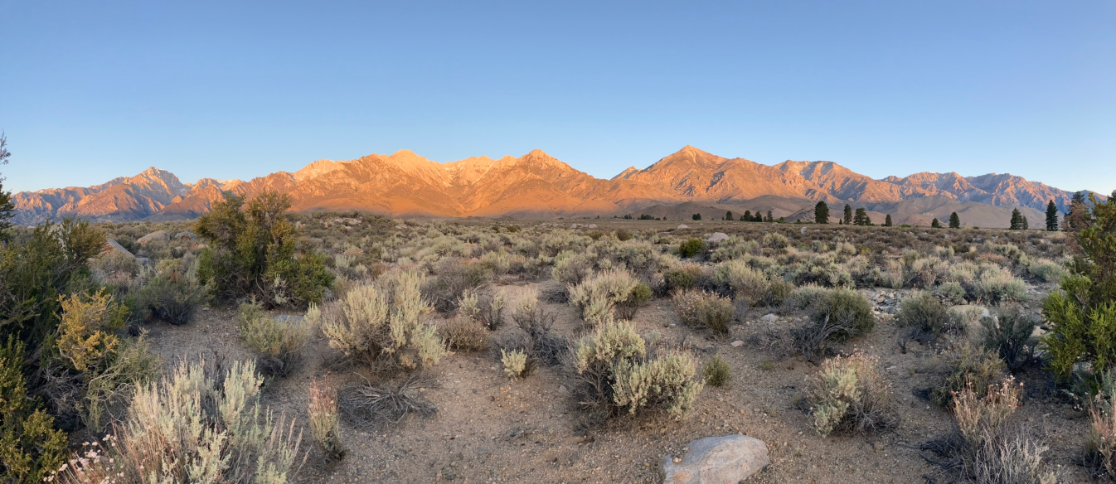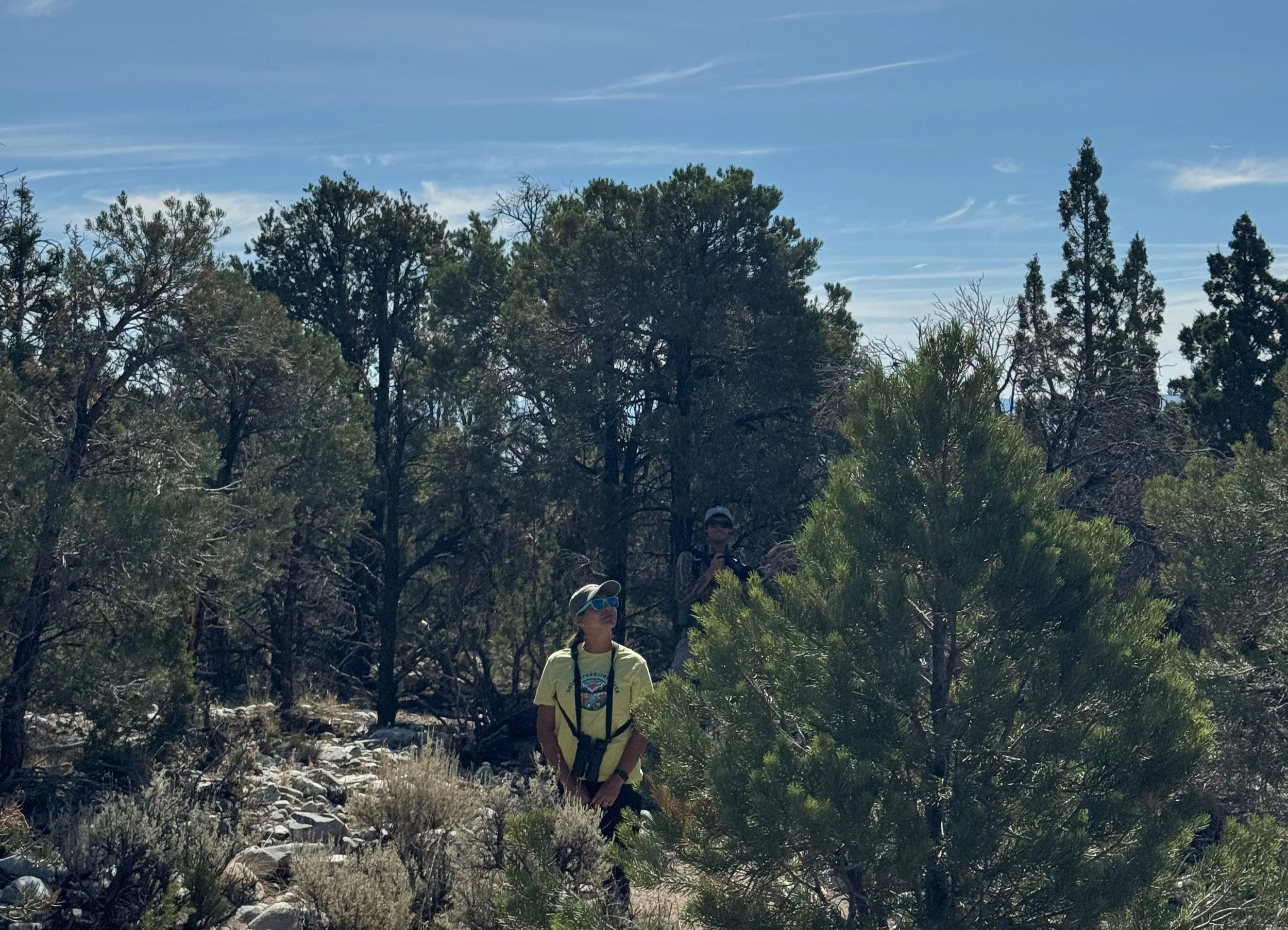Great Basin National Park with Soldiers2Scientists
/In January 2025, I got an email from a fellow from Long Island, NY, asking about Pinyon Jays. You get used to surprises in this field. It turns out that Mike Cohn runs a nonprofit organization that supports veterans like himself after they return from active duty.
Soldiers2Scientists is a non-profit organization founded in 2013 to support veterans seeking engaging outdoor recreation, career advancement, or those struggling with post-deployment transitions. Since that time, they have partnered with many agencies, universities, conservation groups, and other donors to participate in important environmental research.
Every year Soldiers2Scientists journeys to Great Basin National Park to help with various data collection efforts currently underway in the park. On August 8th, I had the opportunity to spend the weekend with them and do some Pinyon Jay surveys. In addition to their group, a few volunteers from Elko and Carson City joined us as well. GBBO is proud to be a partner in these efforts and see the community science program continue to take off.
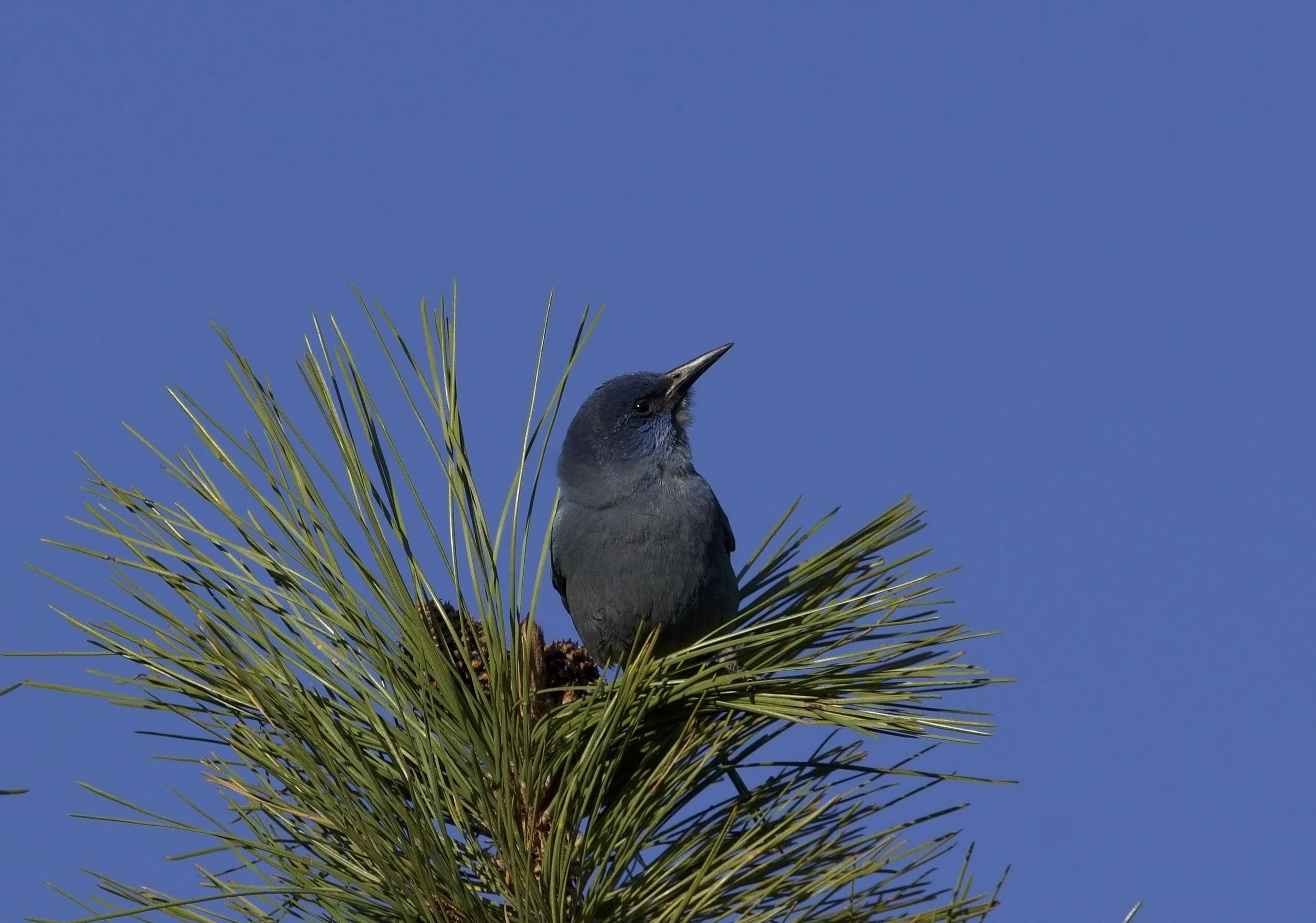

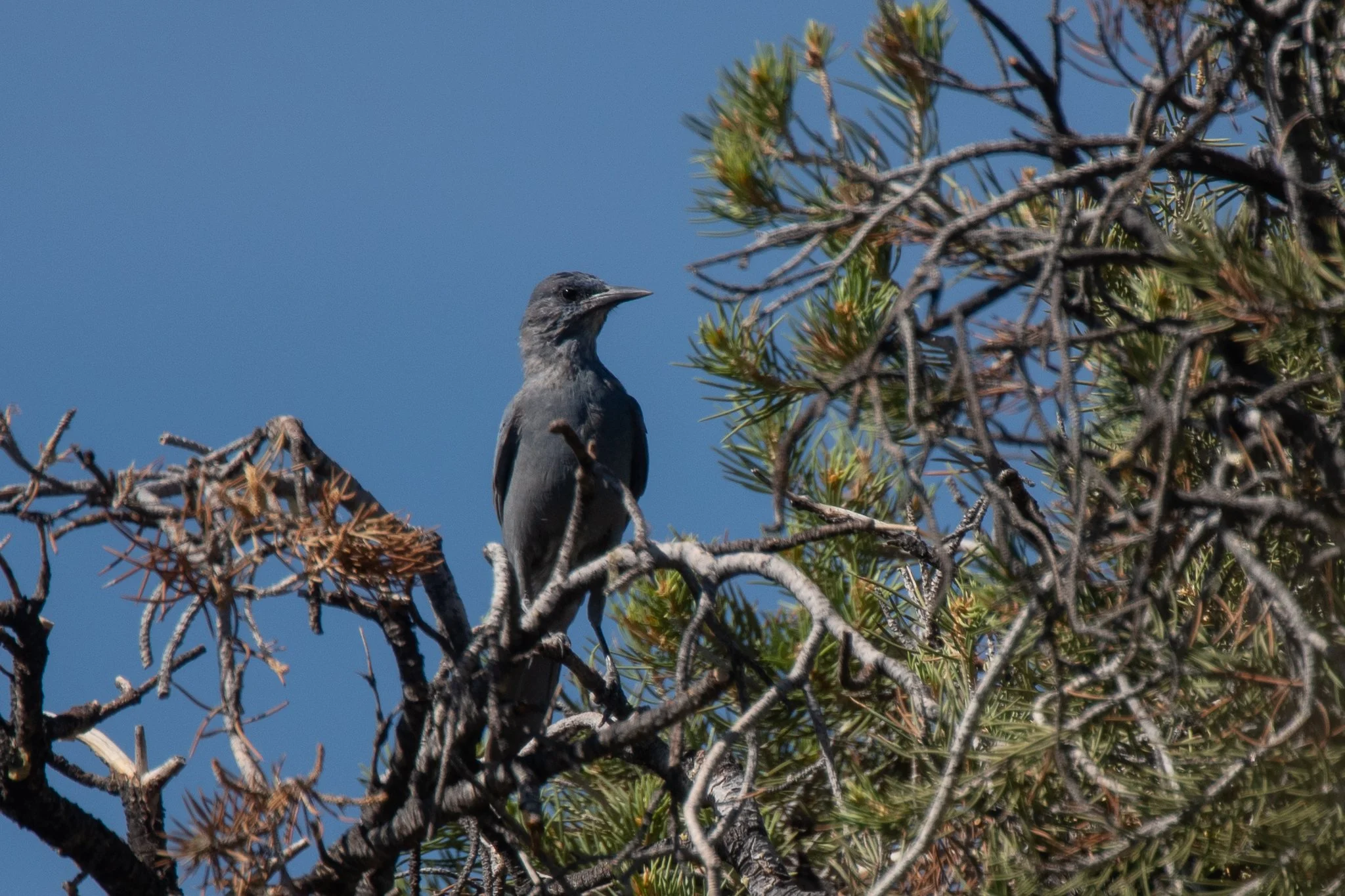

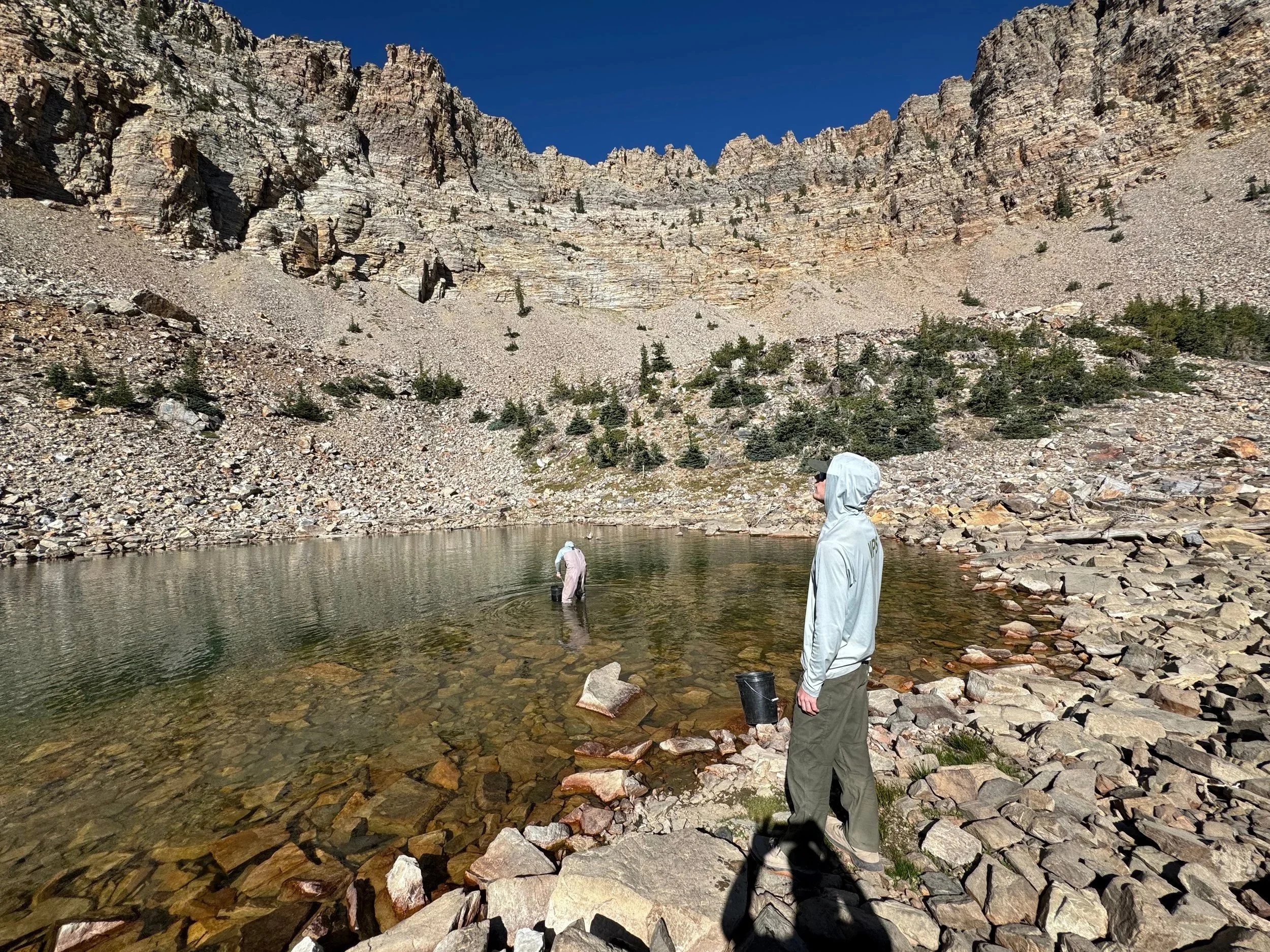

Townsend’s Solitaire at Grey Cliffs campground, Great Basin National Park
Photo by Ned Bohman
When I arrived, the veterans-turned-community scientists were returning from a trek for a trout habitat improvement project. Baker Lake is an alpine lake at approximately 9,000 feet in the Snake Mountains, which is critical breeding habitat for the Bonneville Cutthroat Trout.
On Saturday morning, Mike, Angel, Bethanie, Jackie, Ally, Amy, Jarlath, and Mike all joined me for a bird walk around camp. We did not find Pinyon Jays at camp, but everyone got acquainted with the local avian residents, including a rather confiding Townsend’s Solitaire. We also practiced using Survey123 to collect absence data. While this is not the most exciting data to collect, it is one of the aspects that make GBBO’s Pinyon Jay community science data particularly valuable. When looking for Pinyon Jays, it is often valuable to know where people have spent time looking and not found them.
In addition to data collection on the jays, GBBO is also collecting data on pinyon pine productivity. By tracking the primary food source of Pinyon Jays, we hope to better understand the puzzle of their declining populations. On Saturday evening, we followed up on some local intel and tried to find Pinyon Jays again, at a more likely location, but all we heard were very distant calls. However, we did get a chance for everyone to practice their tree and cone-counting skills with GBBO’s Pinyon Productivity Survey123 form!
On Sunday morning, we returned to our cone-counting location and were excited to find several Pinyon Jays apparently gathering grit and gravel from the exact location we visited the previous evening. We all got to enjoy the small flock for several minutes before they were ultimately disturbed by our presence and left the area.
Angel and Ned observing Pinyon Jays
Photo by Mike Cohn
Learning to count pine cones with Survey123
Photo by Mike Cohn
We then split into groups to survey our designated survey blocks, in hopes of answering some questions: Where did these birds go? What were they up to? Were there more members of a larger flock hiding somewhere? It turned out there were, and Mike, Angel, and I were lucky enough to watch 85 Pinyon Jays flying back and forth over our heads and perching in trees nearby, as we made our way through this flock’s home range. They seemed to be traveling to a distant location but then returning to the general area where we started from, all while potentially keeping tabs on us. It was a great experience for Mike and Angel, who had never seen Pinyon Jays before, and quite a spectacle to see so many birds flying in our midst. We did our best to follow them without disturbing them, which any seasoned Pinyon Jay observer knows is almost impossible. Sure enough, by the time we got to where we thought they were going, they had totally vanished.
We left the area with new knowledge and new questions, as is almost always the case with Pinyon Jays. I think I got the Soldiers2Scientists hooked on the mystery of these birds, and I can’t wait for them to see more when they return for their trip next year. All in all, it was a great weekend. I was so glad to have the opportunity to meet these awesome folks, to show them some of the things I love about this place, all while generating meaningful conservation data.

